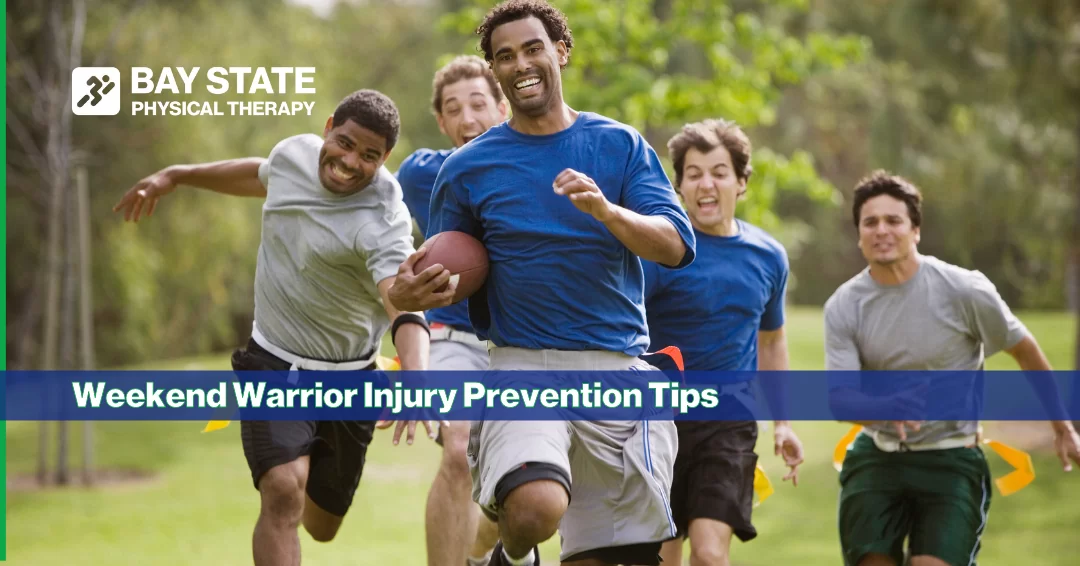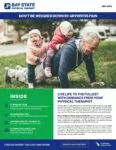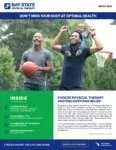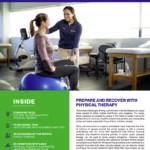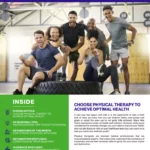With all the responsibilities we balance, it’s completely understandable why we sometimes end up cramming all our fitness activities into our weekends. School is back in session, sport seasons are kicking up, and work responsibilities never seem to slow down. Unfortunately, 5 days of inactivity followed by peak activity on the weekend can lead to muscle soreness or musculoskeletal injury. Some common injuries associated with weekend warriors can include muscle strains, sprains, and tendonitis. As your partner in health, we are here to help.
Exercise Tips to Reduce Injuries and Keep You Moving
Not all injuries are preventable, but there are things you can do to decrease your chances of injury. Here are some physical therapist-approved tips to help you get active and feel good during and after exercise.
Maintain a baseline fitness level
It is tempting to jump off the couch Saturday morning and max-out on your exercise. However, your body will function best when you take steps to maintain a basic level of fitness. General aerobic activity, strengthening, and stretching throughout the week can help you accomplish this. If there is a sport or competition you’ll be participating in, adding some sport-specific conditioning is a good idea.
Build up activity levels over time
While the weekend may be the easiest time to dedicate lengthy trips to the gym or on the trails, there are plenty of ways to build exercise into your work week. Your physical therapist can help you build a circuit of body weight exercises to get your heart and muscles pumping that can be done right at home or even during your lunch breaks. This will help you bridge the gaps in time between weekends and promote continued activity throughout the week and improved health overall.
Don’t skip the warm-up
A progressive and dynamic warm-up is a great way to prepare your body for exercise. It can also help prevent muscle strains and post-exercise soreness. This may include power walking or other aerobic activity to get your heart rate up, along with some high knee marching or walking lunges with arm pumps. Ultimately, any activity that moves those large muscles in controlled movement patterns is a great way to get started.
Invest in quality footwear
Do your feet, knees, hips, back and spine a favor- choose supportive footwear! The impact of poor footwear affects your entire body. Those old sneakers from last fall are better reserved for yard work than for fitness endeavors. Choosing a proper shoe can help to protect you against common injuries associated with your type of workout. Good shoes can lessen the impact of your step and cushion the foot from heavy landings.
Don’t push through pain
Some soreness after exercise is normal and should lessen with light activity. However, if your pain doesn’t go away after a couple of days or if it increases in severity, a call to your physical therapist may be in order. Your physical therapist has a knowledge of your medical history and understands the nature of delayed muscle soreness. If needed, they can help you know when to seek additional medical guidance.
Seize the Day and Prevent Injuries
Your health and wellness are a vital component of living an active lifestyle. If you’re having pain, have suffered an injury, or just need help designing a training program to get moving again, call Bay State Physical Therapy. As your partner in health, we are always a call or click away to help you live a full and active life so you can reach your optimal health.
To schedule an appointment, call any Bay State Physical Therapy location or complete the form below to request an appointment.
Resources:
- https://ppsapta.org/marketing/blog/browse.cfm?recID=7C1EE359-5056-A04E-37336C4FEB24FA63
- https://www.livestrong.com/article/297024-why-is-it-important-to-wear-proper-shoes-while-working-out/
Tags: Physical Therapy, Exercise, wellness, injury prevention, active, sport injuries

